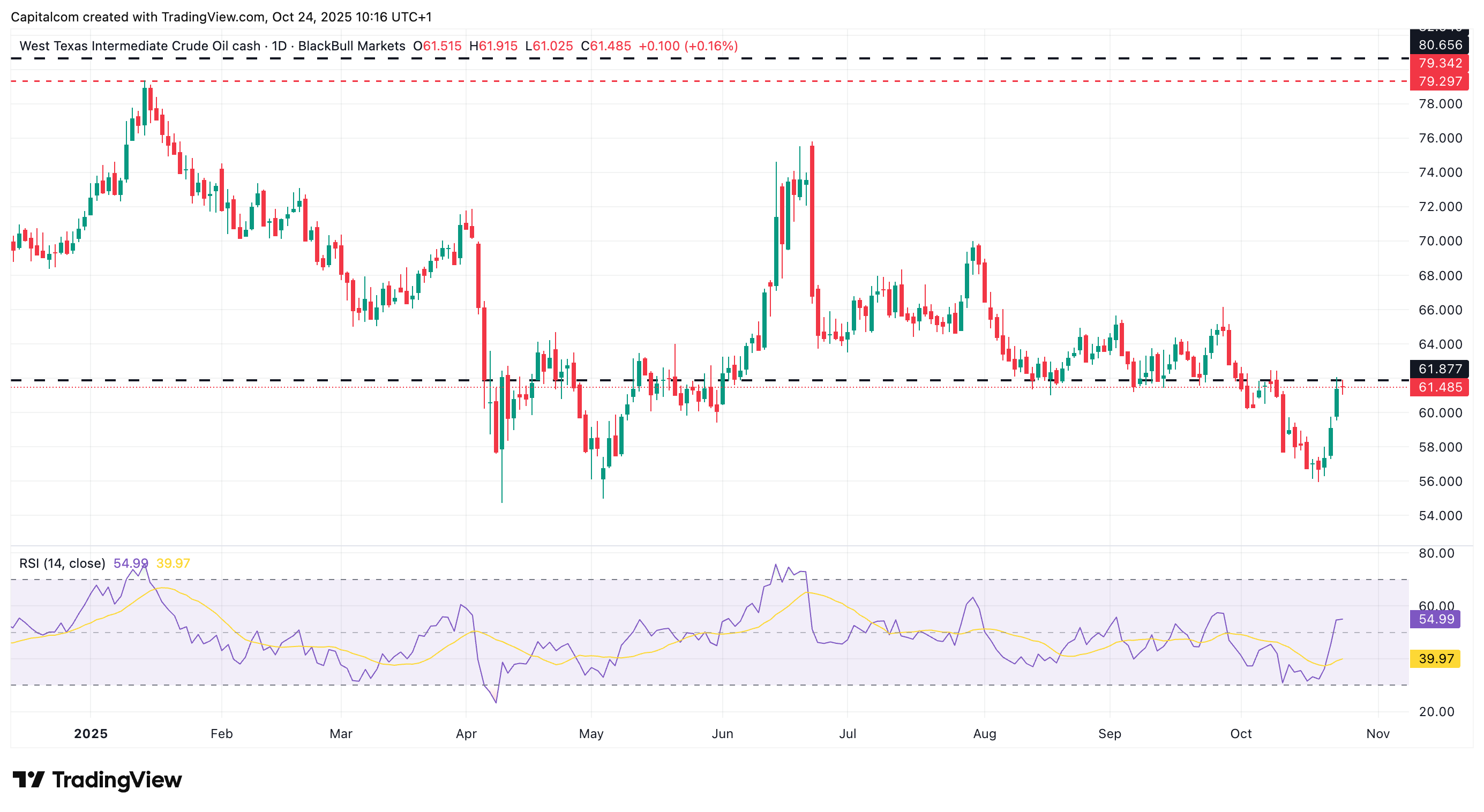US crude outlook: sanctions vs. surplus
Oil prices jump higher this week as the US threatens direct sanctions on Russian producers but the supply outlook remains overcrowded
US crude (WTI) has snapped back from recent five-month lows on a burst of geopolitical risk, even as the medium-term narrative still leans toward ample supply. On Thursday, prices jumped after Washington unveiled direct sanctions on Russia’s two biggest producers, Rosneft and Lukoil, a move that rippled through the physical market as Chinese and Indian refiners scrambled for alternative barrels in the Middle East and Atlantic basin. Spot premiums on key Middle Eastern grades spiked and Brent rallied more than 4%, pulling WTI higher.
Into Friday, WTI is testing previous resistance just below $62 while Brent hovers just below $66—levels that still mark a deep drawdown from the start of the year but show how quickly geopolitical supply risk can reprice the front of the curve.
The near-term push: sanctions and inventories
The sanctions impulse matters because it re-routes crude buying, tightening local balances for Asia and lifting spot differentials. Reuters flagged Indian mega-refiners reviewing or halting Russian purchases under threat of secondary measures—a shift that boosts demand for other grades of crude, with knock-on support for benchmarks.
At the same time, US fundamentals offered a small assist with the latest EIA print showing an unexpected draw in commercial crude inventories versus a forecast build, which was supportive for WTI.
The medium-term pull: more barrels, softer structure
Aside from the sanctions the supply picture has loosened. OPEC+ has begun unwinding voluntary cuts with a modest increase in October kicking off the process. This is expected to continue into 2026, prompting Brent’s discount to six-month futures to widen, a sign of growing comfort with supply and storage and pricing in classic “glut risk”. However, with fears of a Q1-26 stock build, some analysts think OPEC+ could re-cut if prices slide back below $60.
US balances pointing to higher total petroleum inventories whilst demand forecasts remain. Net-net, the structural backdrop still argues for range-bound to softer prices absent fresh supply shocks.
All in all, the sanctions shock has injected a near-term bid into WTI, but the bigger canvas still shows ample supply and softening structure. Unless sanctions bite harder than expected or OPEC+ pivots back to cuts, the base case is choppy, range-bound trading with rallies capped by the surplus story. The weekly EIA data, spot differentials and OPEC+ rhetoric can be used as the signs of whether shock or surplus remains in charge.
Technical picture
The daily chart shows how the drop in WTI has been gradual and well-aligned, with the RSI not having been pushed into oversold territory since April. This confirms the longer-term bearish bias despite the recent bounce. A good test will be whether resistance between 61.82 – 62.45 is able to contain the price in the next few days. If so, the bearish dynamic remains well anchored in the near future. However, a move beyond this area could prompt further buying appetite towards $64, where the next key resistance appears.
US crude (WTI) daily chart

Past performance is not a reliable indicator of future results.